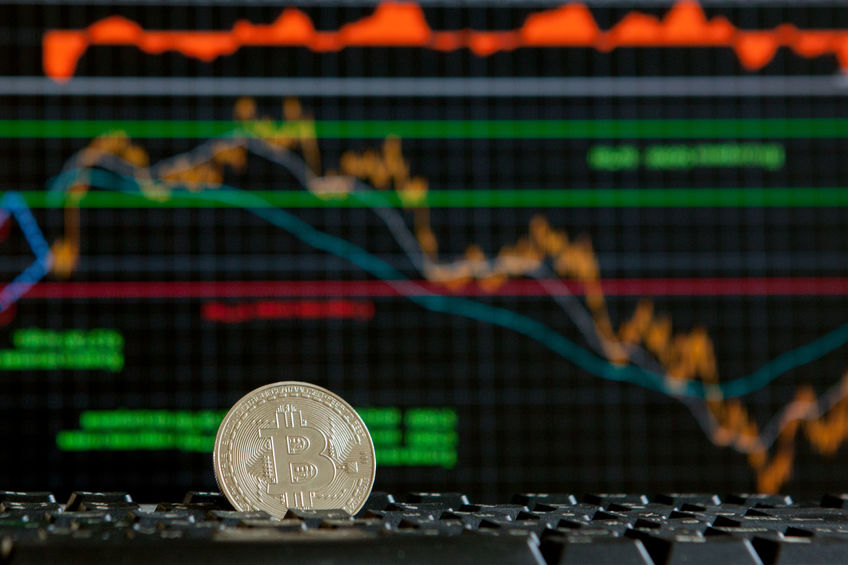What future awaits cryptocurrencies?

The recent bankruptcies of key figures in the cryptocurrency world have highlighted the vulnerabilities of a nascent financial system, sparking widespread debate about the future of virtual currencies. So, what can we anticipate?
On 8 January 2009, in response to the sub-prime crisis and the subsequent unprecedented shock to the global banking system, a mysterious individual known as Satoshi Nakamoto released a white paper detailing bitcoin. This was an entirely peer-to-peer electronic payment system that required no trusted third party, operating instead on the blockchain—a decentralised network for storing and exchanging information. Thus, the first cryptocurrency came into existence. At the close of 2009, a single bitcoin was valued at less than one dollar. Over the years, however, this digital asset has surged in value, reaching several tens of thousands of dollars per unit and, spurred by this remarkable success, leading to the creation of numerous other cryptocurrencies.
As of 2024, more than 20,000 cryptocurrencies were listed on the CoinMarketCap platform. Hundreds of millions of users worldwide continue to engage with these digital currencies, underscoring their growing influence. In 2023, a study conducted by the Association for the Development of Digital Assets (ADAN) in partnership with KPMG France found that 10% of the French population owned cryptocurrency.
It must be acknowledged that these new forms of money offer several benefits. The blockchain technology underpinning them ensures their inviolability and total transparency, while also allowing them to operate independently of traditional monetary and banking institutions. This makes them both a highly secure and cost-effective means of transaction. As financial instruments, cryptocurrencies are subject to market-driven price fluctuations, similar to stocks, representing an investment that can appreciate or depreciate dramatically—sometimes with astonishing speed—thereby enriching some and impoverishing others in an instant.
As a true innovation in finance within an ever-more digital society, what effect might this digital payment system ultimately have on commerce and the economy? What scenarios should retailers be preparing for?
The uptake of cryptocurrencies is on the rise.
In the United States, Overstock, an online furniture retailer, was among the first to accept payments in Bitcoin, as well as in Litecoin (LTC), Ethereum (ETH), and Monero, starting in 2014. Since then, major companies including Starbucks, AT&T, Microsoft, Amazon, Subway, Shopify, Rakuten, Domino’s Pizza, KFC, and even Home Depot have embraced cryptocurrency payments. A 2023 study by Deloitte, titled “Merchants Getting Ready for Crypto,” suggested that nearly 75% of retailers globally planned to accept this type of payment within the next two years.
“The growing adoption of cryptocurrencies by individuals, businesses, and institutional investors demonstrates that digital assets are increasingly being recognised as a legitimate payment method. Cryptocurrencies offer users complete control over their funds by allowing them to store money under their own management. This autonomy contributes significantly to the potential of cryptocurrencies to become leading payment solutions in the future,” explains Aharon Miller, co-founder of Oobit, a company specialising in crypto transactions.
In 2022, Gucci led the luxury sector by accepting bitcoin payments in its stores across New York, Los Angeles, Miami, Atlanta, and Las Vegas, subsequently rolling out this payment option across its entire network. That year, other luxury brands like Balenciaga, Tag Heuer, and Hublot also adopted cryptocurrency payments. By October 2023, Ferrari had announced that its sports cars could be purchased with bitcoin and Ethereum, provided the transactions occurred in the United States.
Israel, a pioneer in cryptocurrency adoption, boasts several hundred bars, restaurants, and shops that accept this form of payment. Meanwhile, India has recently emerged as the world’s second-largest market for cryptocurrency transactions, with a volume of $268.9 billion, surpassing Vietnam, according to the “Crypto Index Adoption 2023” ranking. The advance of virtual currencies continues unabated, and all indications suggest that this trend is only set to grow.
Increasingly innovative.
The integration of cryptocurrencies into established economic structures, across brands and businesses in both physical stores and e-commerce platforms, is being propelled by innovative technological tools designed to streamline their use and hasten their widespread adoption.
One such tool is Binance Pay, provided by Binance, the largest cryptocurrency exchange in the world by volume. Binance Pay is a contactless payment app that allows users to make purchases at retailers globally using their smartphones. By scanning a designated QR Code, users can complete transactions and choose from over 80 different assets, including Bitcoin and Ethereum, for payment.
Advancing even further, the Singaporean startup Oobit has created an application that allows individuals to use cryptocurrencies at existing VISA and MasterCard terminals through a specially configured bank card, while offering merchants the option to receive payments in fiat currency. Similar to Binance Pay, this “crypto to fiat” exchange technology automatically converts bitcoin or any other cryptocurrency into dollars or any other conventional currency. It is already popular among consumers in Asia, Latin America, Canada, and Australia.
By incorporating cryptocurrencies into their technologies, major payment systems companies, notably Visa and Mastercard, are actively participating in these innovations. The same is true for banks. In France, modern banks such as Revolut, Boursorama, Fortuneo, N26, and Hello Bank are embracing these new payment methods. Revolut even enables its customers to invest in cryptocurrencies, offering a selection of 90 digital currencies that have been identified as the safest and most profitable.
Traditional banks, including SG and BNP Paribas, have also entered the fray, a trend mirrored by major international banks. Yves Choueifaty, founder of Tobam—a startup that provides “rational investment solutions to long-term investors in efficient markets”—notes that “today, all American banks have introduced their cryptocurrency offerings, with JP Morgan even recently declaring it as their preferred alternative asset.”
These assets are increasingly capturing the interest of financial entities, who view them as a promising avenue for generating new profits.
Heightened regulation.
In response to the proliferation of cryptocurrencies and the emergent parallel financial system that operates beyond the oversight of regulators and traditional institutions, governments are increasingly implementing stringent regulations to address the risks of fraud, money laundering, and other illicit activities facilitated by these assets.
It is important to acknowledge that, while cryptocurrencies offer a means of securing funds, the unregulated market in which they operate also serves as fertile ground for malfeasance and cybercrime. No blockchain technology can insulate users from the threats of deception, scams, or misrepresentations of an asset’s true value. Additionally, high-profile collapses of major entities like Celsius Network, FTX, Alameda, and Terraform Labs have exposed the vulnerability of the ecosystem in the absence of regulatory protections.
In France, since the enactment of the Pacte Act in 2019, cryptocurrencies have been integrated into the legal framework governing digital assets. Consequently, exchange platforms are required to register with the AMF (Autorité des Marchés Financiers) as PSANs (Prestataire de Service sur Actifs Numériques).
At the European level, the MICA (Markets in Crypto-Assets) regulation, set to be enacted in June 2023, establishes a legal framework to manage risks and prevent misuse. Stefan Berger, MEP and rapporteur on the MICA regulation, stated in the official press release that “consumers will be protected against deception and fraud, and the sector that was damaged by the collapse of FTX can regain confidence. This regulation gives the EU a competitive advantage.”
Similarly, in Asia, various countries have implemented specific regulatory frameworks. These regulations, whether at national, continental, or international levels, are beneficial for the market as they help to rehabilitate the image of cryptocurrencies, reassure investors, and deter most abuses. In essence, they are facilitating the institutionalization of these assets and their integration into traditional markets by providing greater security and ensuring compliance with financial instruments. The market is currently undergoing standardisation, marking a new phase in its evolution.
Eric Larchevêque, founder of the unicorn company Ledger and one of France’s leading figures in the sector, shared in a 2023 interview with BFM TV that “the next significant milestone in the ecosystem will be when the major states hold reserves in cryptocurrencies. This could occur within the next five years. In fact, I believe it’s already the case for some states, aside from El Salvador, even if they are not yet ready to acknowledge it. I think this shift will be prompted by a major economic breakdown of traditional currencies.”
All indications suggest that cryptocurrencies are poised to assume a more crucial role in the economy, which will undoubtedly affect how retail operates. Retailers, particularly in France, where the adoption is not yet widespread, need to prepare now to accommodate this emerging payment method.

